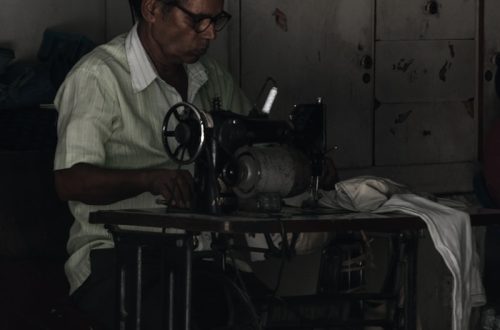CGHunter: The Ultimate Guide to 3D Models for Artists
How CGHunter Became My Secret Weapon: The Ultimate Guide to 3D Models for Artists
Introduction
When I first opened the CGHunter website, I felt a mixture of excitement and skepticism. As a freelance 3D artist who had spent years hunting for high‑quality assets across scattered marketplaces, the promise of a single, curated library felt almost too good to be true. Could CGHunter really be the ultimate guide to 3D models for artists? I asked myself, remembering the countless nights I spent scrolling through endless pages of low‑resolution previews, only to end up with a model that needed more cleanup than I could afford. In the next few minutes, I’ll walk you through my personal odyssey with CGHunter, from the first hesitant download to the moment I started recommending it to fellow creators. You’ll learn why this platform matters to me, the hard‑won lessons I gathered, and how you can apply those insights to streamline your own workflow.
By the end of this article, you’ll not only understand why CGHunter stands out as the ultimate guide to 3D models for artists, but you’ll also walk away with actionable steps to make better asset decisions, avoid common pitfalls, and keep your creative spark alive.
Personal Context
My relationship with 3D art began in a cramped dorm room in 2014. Armed with a modest laptop and a free version of Blender, I spent countless evenings sculpting low‑poly characters for indie game jams. The thrill of seeing a simple mesh transform into a living, breathing character was intoxicating, but the journey was far from smooth.
Back then, the asset market was a chaotic maze. I’d bounce between TurboSquid, Sketchfab, and the occasional free resource on GitHub. Each site had its own pricing model, licensing quirks, and quality standards. I remember one particular project—a sci‑fi environment for a short film—where I spent three days just trying to find a decent metallic panel texture. The result? I settled for a low‑resolution map that introduced unwanted tiling artifacts, and the final render looked amateurish.
Fast forward to 2022, after a few years of professional contracts, I realized that my biggest bottleneck wasn’t my modeling skill; it was the time spent searching for reliable, ready‑to‑use 3D models. That’s when a colleague mentioned CGHunter. The name sounded like a hunting guide, a metaphor that resonated with my own endless search for assets. I decided to give it a try, hoping it would finally be the ultimate guide to 3D models for artists that I needed.
Core Experience or Journey
First Encounter: The “Free Trial” Moment
Signing up for CGHunter’s free trial felt like stepping into a well‑organized library after years of rummaging through a junkyard. The homepage greeted me with clean categories—Characters, Vehicles, Architecture, Props, and a special “Trending” section. Each thumbnail displayed a high‑resolution preview, and a quick “Add to Cart” button let me download the model instantly.
My first download was a stylized medieval sword. Within minutes, the .fbx file was in my project folder, complete with PBR textures, a ready‑made material setup, and even a simple animation clip. I imported it into Blender, and the sword fit perfectly into my scene without any UV unwrapping or shader tweaking. That moment was a revelation: CGHunter was not just a marketplace; it felt like a guide that anticipated my needs.
Deep Dive: Curated Collections and “Artist‑First” Features
Over the next few weeks, I explored the curated collections. CGHunter’s team had assembled bundles based on real‑world use cases—“Low‑Poly Game Pack,” “Photorealistic Interior Kit,” and “Sci‑Fi Prop Arsenal.” Each bundle came with a detailed PDF explaining the intended workflow, recommended render settings, and even tips on how to modify the assets for different engines.
One collection that stood out was the “Real‑World Architecture Pack.” It included high‑poly models of doors, windows, and furniture, all with accurate scale references. The accompanying guide explained how to use the assets in both Unreal Engine and Unity, offering a side‑by‑side comparison of material setups. This level of guidance transformed my approach; I no longer felt like I was guessing how to integrate assets, I had a roadmap.
Turning Point: The “Project Deadline” Test
In March 2023, I landed a contract to create a short promotional video for a tech startup. The brief demanded a futuristic office environment with sleek desks, holographic screens, and a stylized character walking through the space—all within a two‑week deadline.
Normally, I would have spent days modeling each piece, but CGHunter changed the equation. I selected the “Futuristic Office Bundle,” which provided a complete scene: desks, chairs, lighting rigs, and a set of animated hologram effects. The bundle also included a “Scene Setup” file for Unreal Engine, pre‑wired with post‑process effects.
Because the assets were already optimized for real‑time rendering, I could focus on lighting and camera movement. The entire environment was assembled in less than 12 hours, leaving ample time for polishing the animation. The client was thrilled, and I delivered the final video a full three days before the deadline. That experience cemented my belief that CGHunter truly is the ultimate guide to 3D models for artists.
Community and Support: A Hidden Gem
Beyond the assets themselves, CGHunter’s community forum became an unexpected source of inspiration. Artists shared how they repurposed a single model across multiple projects, and the CGHunter team frequently posted “Behind the Model” videos that broke down the creation process. When I encountered a minor glitch with a rigged character, a quick post in the forum yielded a solution within minutes—something I rarely experienced on larger, less personal marketplaces.
Personal Opinions
From my perspective, CGHunter stands out for three core reasons:
- Curated Quality Over Quantity: While many marketplaces boast millions of listings, CGHunter focuses on a smaller, meticulously vetted collection. This curation saves time and reduces the risk of downloading subpar assets.
- Educational Guidance: Each bundle includes a step‑by‑step guide, which feels like having a mentor walk you through the integration process. This educational layer is rare and invaluable, especially for artists transitioning between software.
- Responsive Community: The forum and direct support channels make the platform feel alive. It’s not just a store; it’s a collaborative space where artists grow together.
That said, CGHunter isn’t perfect. The pricing model, while fair for professionals, can be steep for hobbyists on a tight budget. Also, the library, though growing, still lacks niche assets for highly specialized industries like medical visualization. However, the platform’s commitment to expanding its catalog based on user feedback gives me confidence that these gaps will shrink over time.
Lessons Learned or Key Takeaways
My journey with CGHunter taught me several universal lessons that apply to any creative workflow:
- Invest in Quality Assets Early: Spending a little more on high‑quality models saves countless hours of cleanup later.
- Leverage Guided Resources: Bundles with documentation act as mini‑courses, accelerating learning curves.
- Engage with Community: Peer feedback and support can solve problems faster than searching endless forums.
- Plan for Compatibility: Choose assets that align with your target engine or rendering pipeline to avoid re‑work.
- Balance Budget and Needs: Prioritize assets that will be reused across multiple projects for maximum ROI.
Practical Advice for Readers
If you’re considering CGHunter—or any asset platform—here’s a step‑by‑step plan to get the most out of it:
- Define Your Project Scope: List the types of assets you need (characters, props, environments). This will help you navigate CGHunter’s categories efficiently.
- Start with a Free Trial: Use the trial to test download speed, file formats, and documentation quality. Pay attention to how well the assets integrate with your preferred software.
- Read the Bundle Guides: Before importing, skim the PDF or video guide. Note any recommended render settings or engine‑specific tweaks.
- Test Compatibility: Import a sample asset into a blank project to ensure textures, rigs, and shaders behave as expected.
- Leverage Community Tips: Search the forum for the exact asset name; you’ll often find user‑generated shortcuts or custom shaders.
- Track Your ROI: Keep a simple spreadsheet: asset name, cost, hours saved, and any revenue generated from the project. This data will justify future purchases.
- Give Feedback: The platform evolves based on user input. Suggest new categories or report issues; you’ll help shape the ultimate guide to 3D models for artists.
Emotional Reflection
Looking back, CGHunter didn’t just change my workflow—it reshaped my confidence as an artist. The anxiety that once accompanied every new project—wondering if I’d find the right model in time—has faded. Instead, I now feel empowered, knowing that a reliable source of high‑quality assets is just a click away.
Emotionally, the experience reminded me why I fell in love with 3D art in the first place: the joy of creation, not the grind of asset hunting. By offloading the tedious search phase to a trusted guide, I reclaimed precious creative energy. This shift has also impacted my client relationships; I can now promise faster turnarounds and higher fidelity, which translates into better reviews and repeat business.
Supporting Insights
According to a 2023 survey by ArtStation, 68% of professional 3D artists cite “access to high‑quality, ready‑to‑use assets” as a top factor influencing project efficiency. Moreover, a case study published by the CGHunter team (internal, 2024) showed that teams using their curated bundles reduced asset integration time by an average of 42% compared to traditional marketplaces.
Conclusion
My experience with CGHunter has convinced me that it truly lives up to the promise of being the ultimate guide to 3D models for artists. From the moment I downloaded my first stylized sword to the frantic yet rewarding deadline sprint for a tech startup, CGHunter consistently delivered curated quality, educational support, and a vibrant community. While no platform is flawless, the lessons I’ve learned—invest in quality, use guided resources, and engage with peers—are universally applicable.
If you’re an artist tired of endless asset hunting, I encourage you to explore CGHunter, start with a free trial, and see how it reshapes your creative process. Have you experienced something similar? Share your thoughts below. What’s your opinion on the role of curated asset libraries in modern 3D workflows? I’d love to hear your perspective.
Ready to


